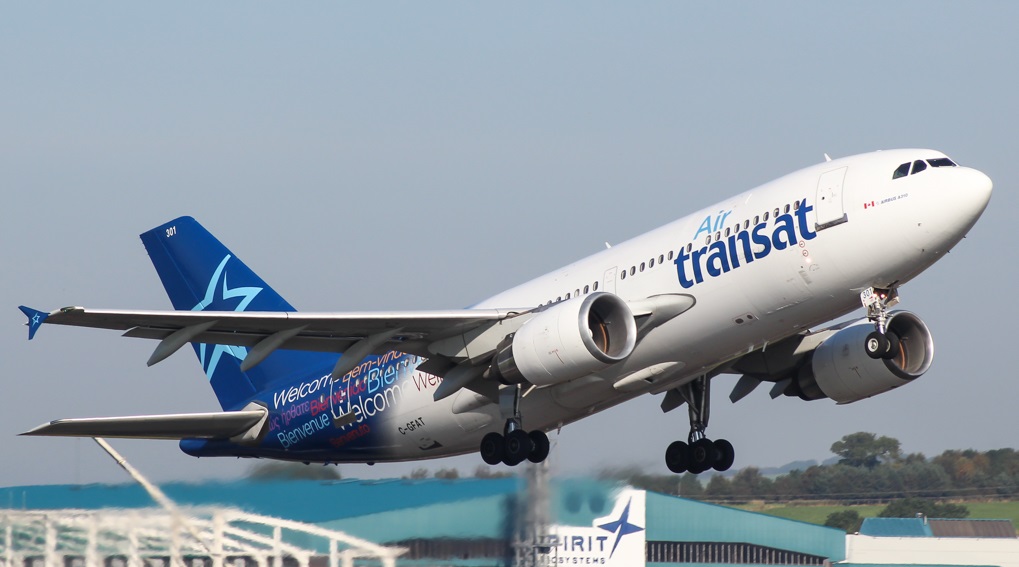The Airbus A310 was one of the key milestones in Airbus’s early history, serving as the company’s first true widebody aircraft family. Introduced in the 1980s, the A310 opened new opportunities for airlines looking for a versatile, fuel-efficient, and smaller widebody compared to its competitors. It became a pioneering design that bridged the gap between long-haul efficiency and medium-capacity needs.
Introduction to the Airbus A310
The Airbus A310 was launched as a shorter, lighter derivative of the Airbus A300, the world’s first twin-engine widebody jetliner. Its purpose was to provide airlines with an aircraft that combined the efficiency of a widebody with reduced capacity, making it ideal for markets where the A300 was too large.
First flown in 1982 and entering service in 1983, the A310 introduced several design refinements, including a completely new wing, updated avionics, and a modern two-crew cockpit. These innovations helped airlines operate more economically while still offering the comfort and range expected from a widebody aircraft.
Key Specifications of the A310
The A310 was produced in two main versions, the A310-200 and the longer-range A310-300. Both were versatile enough to cover short- and long-haul routes, with performance tailored to the needs of different operators.
| Specification | A310-200 | A310-300 |
|---|---|---|
| Passenger Capacity (Typical 2-Class) | 280–280 | 280–280 |
| Max Seating | ~280 | ~280 |
| Length | 46.66 m (153 ft 1 in) | 46.66 m (153 ft 1 in) |
| Wingspan | 43.9 m (144 ft 4 in) | 43.9 m (144 ft 4 in) |
| Range | 4,150 NM (7,685 km) | 5,150 NM (9,540 km) |
| Maximum Takeoff Weight (TOW) | 142 tonnes | 164 tonnes |
These figures show how Airbus positioned the A310 as a highly efficient widebody aircraft, smaller than the Boeing 747 or DC-10 but with the flexibility to serve a variety of routes.
Engine Options for the A310
The Airbus A310 was designed to accommodate two types of turbofan engines:
This flexibility gave airlines the choice to align the A310 with existing maintenance and fleet strategies. Both engine options provided the thrust necessary for medium- to long-haul operations while maintaining lower operating costs than larger widebodies.
Fuel Efficiency and Environmental Impact
Compared to other widebody jets of its era, the A310 offered significantly improved fuel efficiency. Its optimized wing design and smaller fuselage reduced drag, while the twin-engine configuration made it far more economical than four-engine competitors.
Although it did not benefit from modern features like winglets or composite structures, the A310’s performance set new standards in the early 1980s. Airlines could operate long-haul flights at lower cost and with reduced fuel burn compared to similar-capacity aircraft from other manufacturers.
The A310 also met ICAO noise standards of its time, allowing operators to use it in noise-sensitive airports across Europe and North America.
Passenger Experience on the A310
Inside, the Airbus A310 offered passengers the comfort of a widebody cabin but in a smaller, more intimate setting. Typical layouts included:
- 2-4-2 seating in economy class, providing good comfort for medium- and long-haul flights.
- Spacious galleys and advanced (for its time) in-flight service layouts.
- Cargo capacity that allowed airlines to combine passenger service with significant belly freight revenue.
The quieter twin-engine operation compared to older tri-jets like the DC-10 or L-1011 also improved cabin comfort. While cabin amenities were limited by the standards of the 1980s, the A310 was seen as a modern and reliable choice for travelers.
Operational History and Market Presence
The A310 entered service with Lufthansa and Swissair in 1983 and quickly became popular among European and Asian carriers. Its unique blend of range and efficiency made it ideal for “long and thin” routes—long-haul flights with relatively lower passenger demand.
In total, Airbus built 255 A310 aircraft before production ended in 1998. While modest compared to the A320 family, the A310 played an essential role in establishing Airbus as a global competitor to Boeing and McDonnell Douglas.
Today, most A310s have retired from passenger service, but many continue to fly as cargo aircraft or military multi-role transports. Operators such as FedEx and several air forces worldwide extended the type’s service life well into the 21st century.
A310 Variants and Their Differences
The Airbus A310 family was straightforward, consisting primarily of two variants:
- A310-200 – The original model, optimized for medium-haul routes, with a range of approximately 4,150 NM.
- A310-300 – Introduced in 1985, this version added additional fuel capacity and higher maximum takeoff weight, extending its range to over 5,000 NM and making it suitable for true intercontinental flights.
Beyond passenger versions, Airbus also developed A310 freighters and offered convertible combi models to meet cargo market demands.
Legacy and Influence on Future Airbus Aircraft
While the Airbus A310 was not produced in the same massive numbers as later models, its influence on the Airbus product line was profound. Key innovations—such as the advanced wing, modernized avionics, and reduced crew cockpit—directly influenced the Airbus A330 and A340 programs that followed.
The A310 also proved that airlines were eager for efficient, twin-engine widebodies capable of flying long distances. This concept became central to Airbus’s long-term strategy and is still reflected today in aircraft like the A330neo and A350.
Although the A310 no longer dominates skies, its role in shaping Airbus’s reputation and technological approach cannot be overstated. It remains an important step in the evolution of widebody jetliners, bridging early Airbus experiments with the modern generation of efficient long-haul aircraft.
Read more:
- Airbus A320: Specifications, Features, and Seat Maps
- Airbus A340-300: Features, Specifications, and Performance
- Airbus A220: Features, Specs, and Benefits of the A220 Family
- Airbus Beluga: The Unique Transport Aircraft
- Airbus A340-600: Features, Specifications, and Performance
- Airbus A350: Features, Specs, and Innovations
- Airbus A319: Specifications, Seat Maps, and Features
- Airbus A321neo: Features, Specs, and Benefits
- Airbus A321: Specifications, Features, and Seat Maps
- Airbus A380: The Ultimate Guide to the World’s Largest Passenger Aircraft
- Airbus A330-300: Specifications, Seat Maps, and Amenities
- Airbus A350-900: Features, Specs, and Seating Guide
- Airbus A330: Specifications, Features, and Seat Maps

